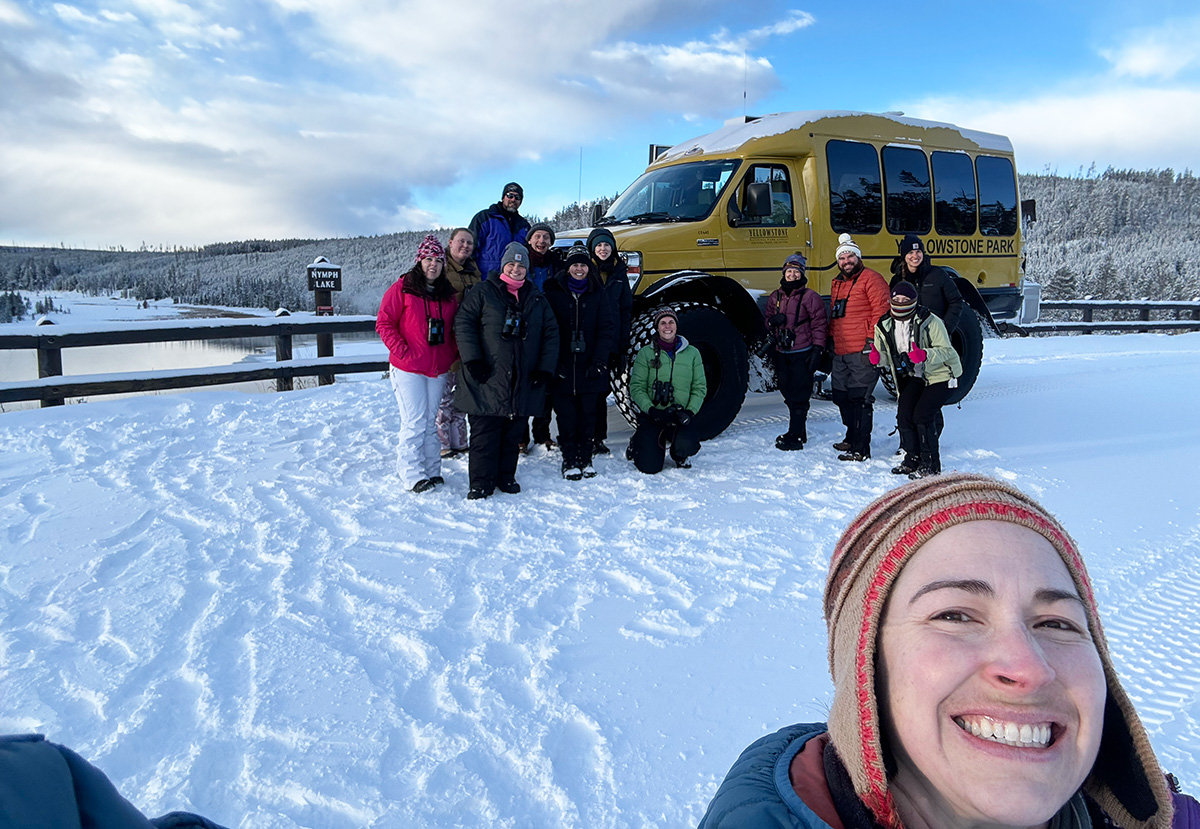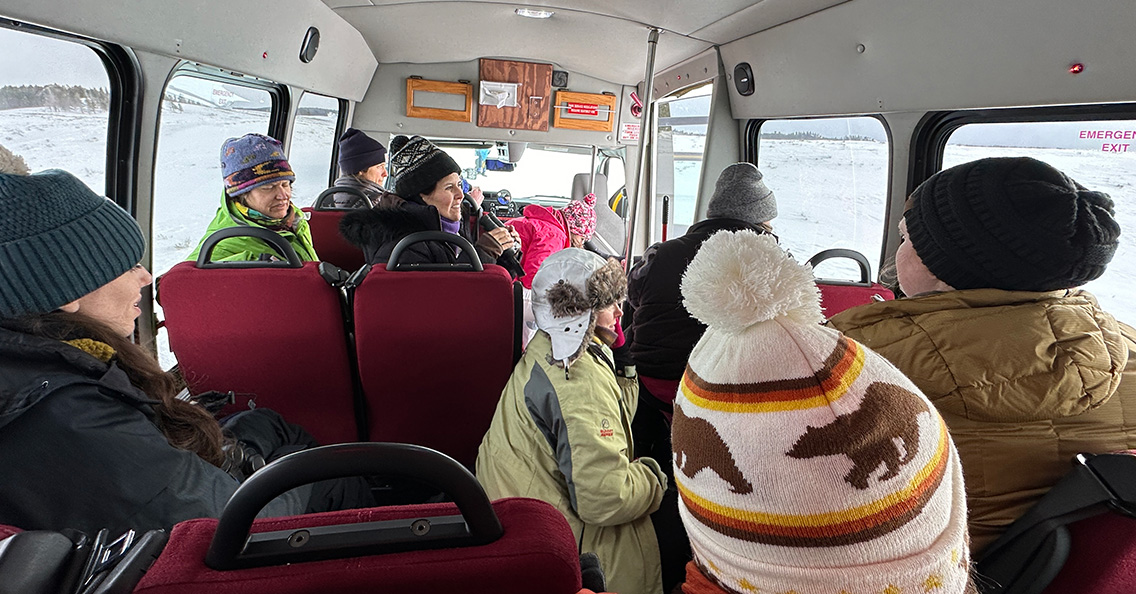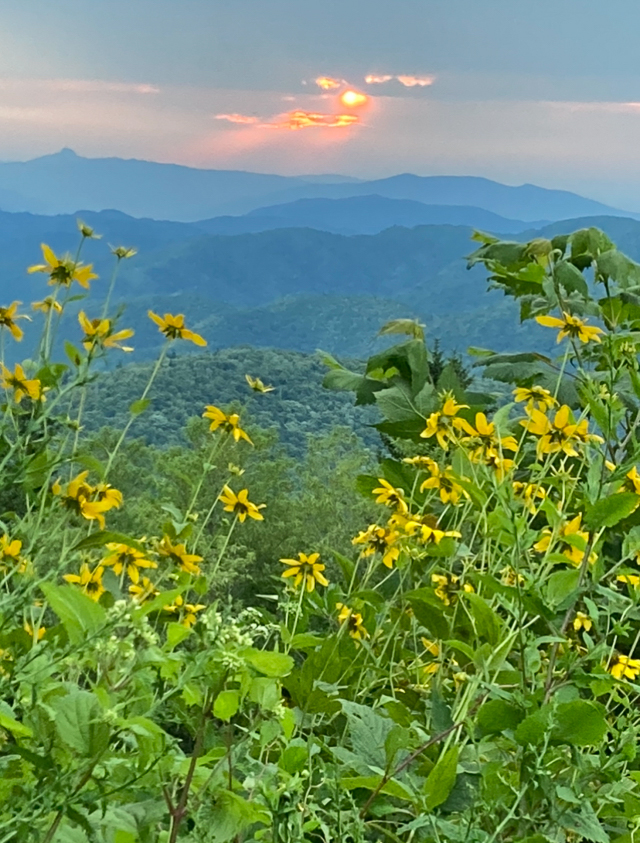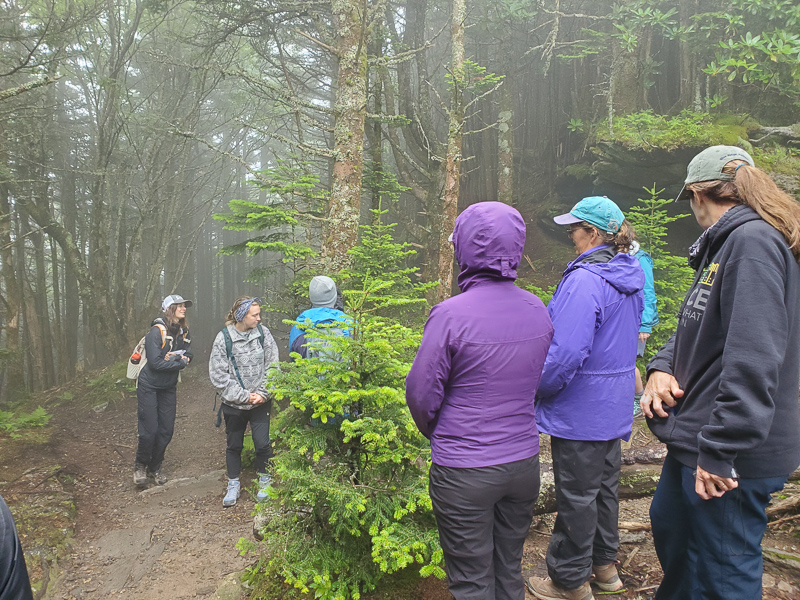“‘oh, what fun it is to ride in a Yellowstone snowcoach today, hey!’”
January 12, 2024 - 9 Comments
Friday proved to be more thrilling than we could have imagined! We started our day at Mammoth Hot Springs Hotel. We loaded up in a snowcoach & headed out for a day full of learning & adventure!

Group with our snowcoach at Nymph Lake
We were caught up in a bison parade as we followed a herd down the road, but not close enough to alter their behavior. We visited multiple overlooks on the Grand Canyon of the Yellowstone, including the famous Artist Point, where Adam taught us about Thomas Moran, an artist who visited Yellowstone before the park was established and whose paintings helped persuade Congress to create our first national park. At another overlook, Kelly helped the group spot an otter. We watched as it climbed the steep slopes near the Lower Falls, went into the trees, and after a surprisingly short time, appeared again on the ice near the top of the 308 foot tall waterfall!

Group at the Lower Falls of the Yellowstone River
Amazingly, on our ride through Hayden Valley we spotted a very tightly gathered group of bison. Our driver, John, suggested that they might be gathered like that in response to a predator. Sure enough, we spotted a wolf a few minutes later, just to the side of the herd of bison. We set up our spotting scope in the door of the snowcoach and watched as first one, then two, then as many as 13 wolves came into view! For the most part, the bison seemed unfazed, but as a wolf approached too close, a large bison raised its tail and ran at the wolves, chasing them back. There were a few other similar interactions before we lost sight of the wolf pack behind a small hill and moved on. We were thrilled to have had the chance to watch such an amazing interaction!

Wolf watching from the snowcoach – in the back you can see Tracy peering through the scope set up in the doorway
As we continued our journey along the Yellowstone river, we stopped to view trumpeter swans and other waterfowl at Fishing Bridge, near where the Yellowstone River flows out of Yellowstone Lake. Before we could even get out of the snowcoach, we spotted a coyote doing face-plants on the other side of the road. After a number of unsuccessful attempts at catching prey, we got to see it munch on a small, gray-colored subnivean creature (small animals that live under the snow in the winter, and also Sallie’s expert topic). We think it was likely a vole.

Coyote chomping on what we think was a vole. Photo by Adam Smith.
Our group has learned and experienced so much together already. Johlynn summed up our day with a beautiful quote by Maya Angelou: “My mission in life is not merely to survive, but to thrive; and to do so with some passion, some humor, and some style.”
We ended our day at Old Faithful Snow Lodge. Our group enjoyed group quality time over dinner. We turned in early to prepare for our next full, very cold day; tonight’s low temperature at Old Faithful is predicted to be -34°F with a wind chill of -45°F… We hope we survive our dawn walk around the geyser basin tomorrow!




